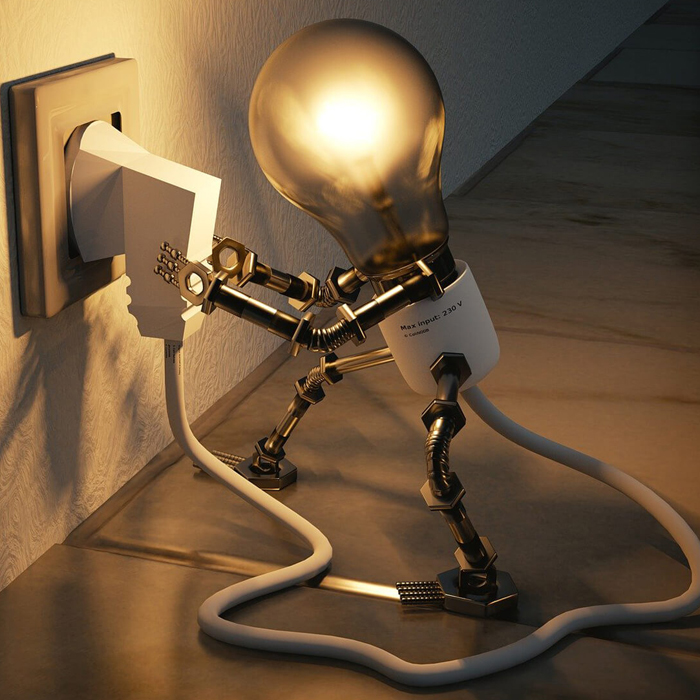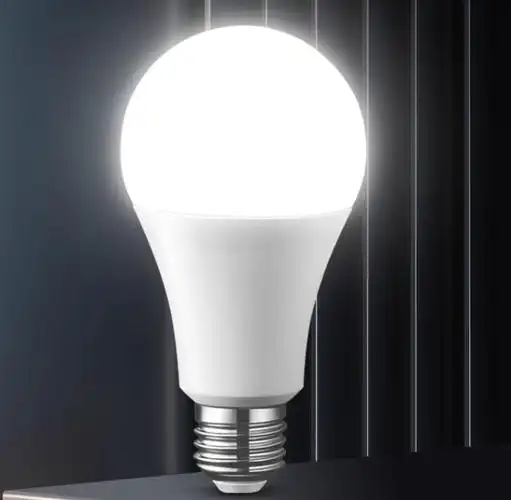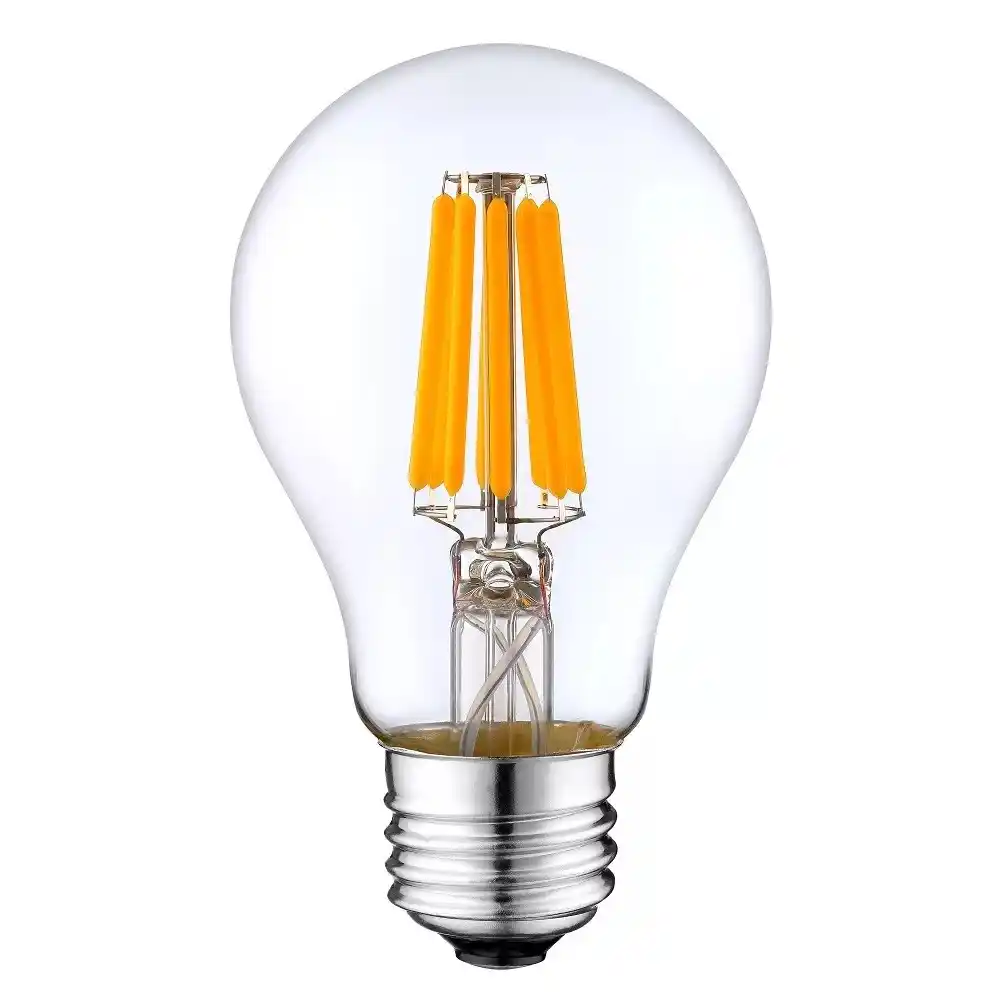How safe are LED lights? Here’s everything you need to know…
Have you ever wondered, are LED lights safe?
Well, you’re not alone.
When it comes to any new technology, in any field, safety is always the first thing to consider.
Even though LEDs have been on the market for decades, there are still people who question their safety.
If you’re one of them, this article is for you.

In it, we’ll discuss everything you need to know about the safety of LED lights and answer some of the most common questions people ask these days.
Including:
What effects do LED lights have on the eyes?
Are there any health issues that can arise from using LED lights?
Should you be worried about fire hazards?
What is blue light? Should you be worried about it?
Well, that’s all for this in-depth review of LED light safety; you’ll find answers to all of these questions and more.
LED Light Safety
So:
Are LED lights safe?
Read on to find out…
Which light is good for your health?
Is LED lighting bad for your health?
LED Lights and Eye Damage
LED Lights and Health Issues
LED Lights and Fire Hazards
Are LED Lights Safe for Babies
How Harmful Is Blue Light?
Chapter 1: Which Lights Are Good for Your Health?
Notes:
Light is more than just visual.
How?
Well, it affects your health, too; both biologically and psychologically.
For example:
Light can improve or disrupt your sleep, mood, and reaction time, to name a few.
Here’s Why
To fully understand the health effects of LED lights, you must first understand how different types of light affect you.
For example:
Green light strengthens muscles and stimulates the production of growth hormones.
Red light helps your body prepare for sleep.
Blue light keeps you alert and awake.
Yellow light helps treat depression.
Orange light inspires creativity.
Purple light reduces mental and emotional stress.
The list is endless…
So, what did you learn from this?
Light has different psychological and biological effects on humans.
You can use lighting to improve your health and well-being.
You need to be careful when choosing lighting to avoid suffering from the effects of bad lighting.
Imagine this:
If you use a blue-light-heavy fixture in your bedroom, you’ll have a hard time falling asleep.
Or…
If you light a library with red light, a lot of reading will be done in people’s dreams (because most people will be dozing off).
Got it?
Anyway, back to our question; what kind of light is good for your health?
The best answer is natural light, aka sunlight.
Natural light is generally beneficial in many ways, however, we only get about 12 hours of natural light per day…
So:
What kind of light is best for lighting the four or five nights of the day when we don’t have sunlight?
Best answer; LED.
I’ll tell you why next.
Chapter 2: Is LED Lighting Bad for Your Health?
As LED light technology becomes more and more popular, many people are watching its development closely, trying to determine if there are any harmful effects of LED lights.
So:
Is there?
Well, like most things, LED lights are not perfect.
The biggest downside to LEDs is blue light pollution. We’ll discuss this in more detail later in this article…
However:
Blue light often causes serious effects on eye health issues such as age-related macular degeneration, cataracts, and changes to the retina with short, high-intensity exposures.
But:
Before you label LEDs as harmful to your health, be aware that it takes quite a while and exposure to blue light to have an effect on your health.
Most importantly:
If you compare this shortcoming to all the health hazards that come with other lighting technologies, you’ll realize that LEDs are probably the safest light source after sunlight.
For example:
Halogen bulbs often contain heavy metals that are not only harmful to humans, but also to the environment.
The toxic vapors from CFLs can stay in the air for weeks and are also very harmful to human health. Not to mention the electromagnetic radiation these “energy-saving lamps” emit.
In addition to the flickering that causes eye fatigue, fluorescent lamps contain mercury, a highly toxic chemical.
Incandescent lamps have the shortest lifespan and tend to run hot, so they are not only energy inefficient but also expensive to maintain. Plus, they are very harmful to the environment.
With LED lights, you don’t have to worry about all of these issues and more; that’s why many experts often recommend LEDs as healthy lighting for your home.

Anyway, there’s still a lot you need to know to fully answer the question: Are LED lights safe?
More below:
That being said, LED panels use green lighting technology.
This means they are very friendly to the environment.
So, you don’t have to worry about environmental pollution.
Since these lamps are made of recyclable materials, they can be reused when they lose their useful life.
Chapter 3: LED Lights and Eye Damage
Do LEDs cause damage to the eyes?
Yes.
This is mainly due to long-term exposure to blue light.
Now:
Not everyone will suffer eye damage from using LED lights.
Why?
Because eye damage depends on several factors, including:
The amount of light exposure.
The length of exposure.
The time of exposure (the risk of suffering side effects of LED lighting is greater late at night than in the early evening).
The color temperature of the lamp.
Basically, if you are exposed to high-intensity LED lights for long periods of time, the likelihood of eye damage increases.
The reverse is also true.
That’s why your lighting choices will greatly impact your eye health.
So:
1. Which color of light is best for your eyes?
The obvious answer is natural light.
However, even sunlight can have an impact on eye health, which is why health experts often discourage people from looking directly at the sun.
Now:
Sunlight is best because it generally appears warmer; this greatly improves our natural circadian rhythm.
When it comes to artificial lighting, warm-temperature lighting sources such as warm white LEDs or incandescents usually do the trick.
But why settle for expensive and inefficient incandescent technology when you can use warm white LEDs…?
2. Are warm white LEDs bad for your eyes?
No!
In fact, when you’re looking for quality, efficient lighting fixtures with minimal drawbacks, warm white LEDs are exactly what you need.
Warm LED lights are good for your eyes because they tend to mimic natural sunlight without producing harmful UV rays.
So if you’ve been wondering; which light bulbs are safest for your eyes?
Warm LED lights are your answer.
People also ask:
3. Is it safe to look into LED lights?
Yes.
But only for a brief moment; in fact, a glance is enough.
This is because staring at LED lights for a long time exposes your eyes to a lot of blue light; which can have both short-term and long-term effects on your visual health.
So:
4. How to protect your eyes from LED lights?
To ensure that your eyes remain healthy and protected from any effects that LED lighting may have, you can:
Avoid looking directly into LED fixtures.
If you do need to take a look at your fixtures, take a quick look.
Don’t install cool white LED lights in rooms where you spend most of your time at home; instead, opt for warm color temperature LED fixtures.
Limit your exposure to LED lights to a maximum of 6-7 hours per day. This way your eyes will be exposed to less blue light.
You see.
These simple steps can protect your eyes from unnecessary stress and damage.
Anyway, are there other health issues besides your eyes that you need to know about?
Read on to find out...
Chapter 4: LED Lights and Health Issues
Now:
Besides eye issues, you may also be wondering; can LED lights cause health issues?
To fully understand this, we need to refresh our understanding of human biology.
So:
We all know that our bodies function through biological processes and with the help of hormones.
One of the important hormones is called melatonin.
It is responsible for synchronizing our body's biological clock and dictating the day-night cycle.
These processes generally prepare our bodies for sleep, while also triggering a number of physiological responses, including:
Temperature regulation.
Blood pressure.
The secretion of digestive enzymes.
The production of other hormones.
In addition to these functions, melatonin can also act as a:
Neuroprotectant.
An anti-tumor suppressor.
An immunomodulator.
An anti-inflammatory hormone.
Relieve Antioxidant Effects
So if we don’t have enough melatonin in our bodies, a lot of things can start to go wrong.
But:
What role does LED lighting play in all this?
Research shows that increased exposure to white LEDs leads to increased exposure to blue light; which in turn suppresses melatonin production.
Interesting fact:
Blue light exposure comes not only from LED lamps, but also from smartphones, laptops, TVs, tablets, or anything else made with white LED light technology.
So, we recommend that you avoid sitting in front of any LED screen within three hours of bedtime.

With that in mind, let’s take a look at some of the health issues that can arise from long-term exposure to white LED light…
Health Effects of Overexposure to LEDs
In addition to eye strain, overexposure to the blue light of LEDs can lead to a number of other health issues.
Here are answers to some common questions about the safety of LED lights.
For example:
1. Do LEDs cause insomnia?
You may start to experience symptoms of insomnia.
Why?
The blue light emitted by LEDs can trigger alertness, which can prevent you from falling asleep naturally.
Obviously, if you don’t get enough quality sleep, you won’t be well rested when you wake up.
This point indirectly answers the question: Do LED lights make you tired?
Also:
2. Do LED lights cause cancer?
Well, this claim has not been proven, and the blue light in LED lamps is too low to easily cause cancer.
So where does all the talk about cancer come from?
A 2007 study by the International Agency for Research on Cancer (IARC) classified night shift work, which causes circadian rhythm disruption, as a possible carcinogen.
Note:
A carcinogen is any substance that can cause cancer in living tissue.
Today, many companies use LED lamps for lighting.
And:
Because the blue light from LED lighting stimulates the production of the hormone melanopsin (which is responsible for keeping you alert), it can indirectly disrupt a person’s circadian rhythm.
Can you spot the connection?
Anyway, as I mentioned before, how LED light exposure affects you depends on many factors.
And there are ways to avoid any health issues while still enjoying the benefits of LED lighting.
3. Why do LED lights cause migraines?
Although it is not common, some people often suffer from migraines from using LED lights.
Why?
Well, if the lighting fixture flickers, the rapid changes in lighting often put a huge strain on a person's vision.
Therefore, prolonged exposure to flickering lights may cause migraines.
4. Do LED lights produce radiation?
No!
One of the biggest advantages that makes LED fixtures the best lighting choice is that they do not emit any form of radiation, infrared or ultraviolet.
Therefore, using LED lights is safer than incandescent and halogen bulbs.
Got it?
5. Are you allergic to LED lights?
Photoallergy is not common, but it does exist.
It is often referred to as photosensitivity or photophobia - extreme sensitivity to light.
Notes:
Photosensitivity can occur with any form of lighting (not just LED) and is usually noticeable when you start experiencing symptoms such as:
Visual discomfort.
Inflammation of the eyes.
Headaches/migraines.
Light intolerance.
Vertigo or dizziness.
Excessive blinking and squinting.
In addition, photophobia is often triggered by:
High-intensity (very bright) lighting.
Flickering lights.
Light color, temperature, and wavelength.
Unfortunately, there is no specific treatment for photosensitivity. However, there are things you can do to help those who suffer from photosensitivity.
For example, you can:
Use low-intensity LED fixtures that emit less than 800 lumens.
Use warm-toned LEDs with a color temperature range of 2000K to 3000K.
Install smart light bulbs so you can control their light color and intensity to produce the right amount of light that light-sensitive people find comfortable.
As far as skin allergies are concerned, exposure to LED lighting does not cause any allergies.
So if you have been wondering; are LED lights safe for skin?
Yes, they are.
Continue…
6. Do LED lights cause macular degeneration?
The macula is the part of the eye that allows you to see clear images of objects.
Yes, for people over 50, macular degeneration can lead to vision loss.
So:
How do LEDs fit into this?
According to the French Agency for Food, Environmental and Occupational Health and Safety (ANSES), long-term exposure to the "phototoxic effects" of blue light increases the risk of developing age-related macular degeneration.
7. Do LED lights cause epilepsy?
Only when people with photosensitive epilepsy are exposed to flickering LED lights.
In fact, any type of flickering light - whether it's LED, fluorescent or TV - can cause epilepsy.
Notes:
Epilepsy is a disease that is triggered by a stroke, brain or head trauma. It can also be hereditary.
So flickering lights can only trigger epilepsy, but they can't cause a person to develop epilepsy.
That being said, there are other common safety issues with electrical appliances - fire hazards are one of them.
So, let’s take a look…
Chapter 5: LED Lights and Fire Hazards
The main question here is:
Can LED lights catch fire? If so, how easily?
Another major benefit of LED lights is that they are very energy efficient.
This means that most of the energy they use is converted into light rather than heat.
Amazing, right?
So if you’re wondering…
Do LED bulbs get hot?
The correct answer is “No”!
Maybe a little hot…
LED lights can run for long periods of time without getting hot, and they don’t emit any kind of radiation.
This also answers the question: Can you leave LED lights on all night? – but not in bedrooms or sleeping areas.
Due to their high brightness, LED lights can provide safe lighting for spaces that are not used at night.
So, can LED lights get hot enough to cause a fire?
The chances of this happening are almost 0% – unless

